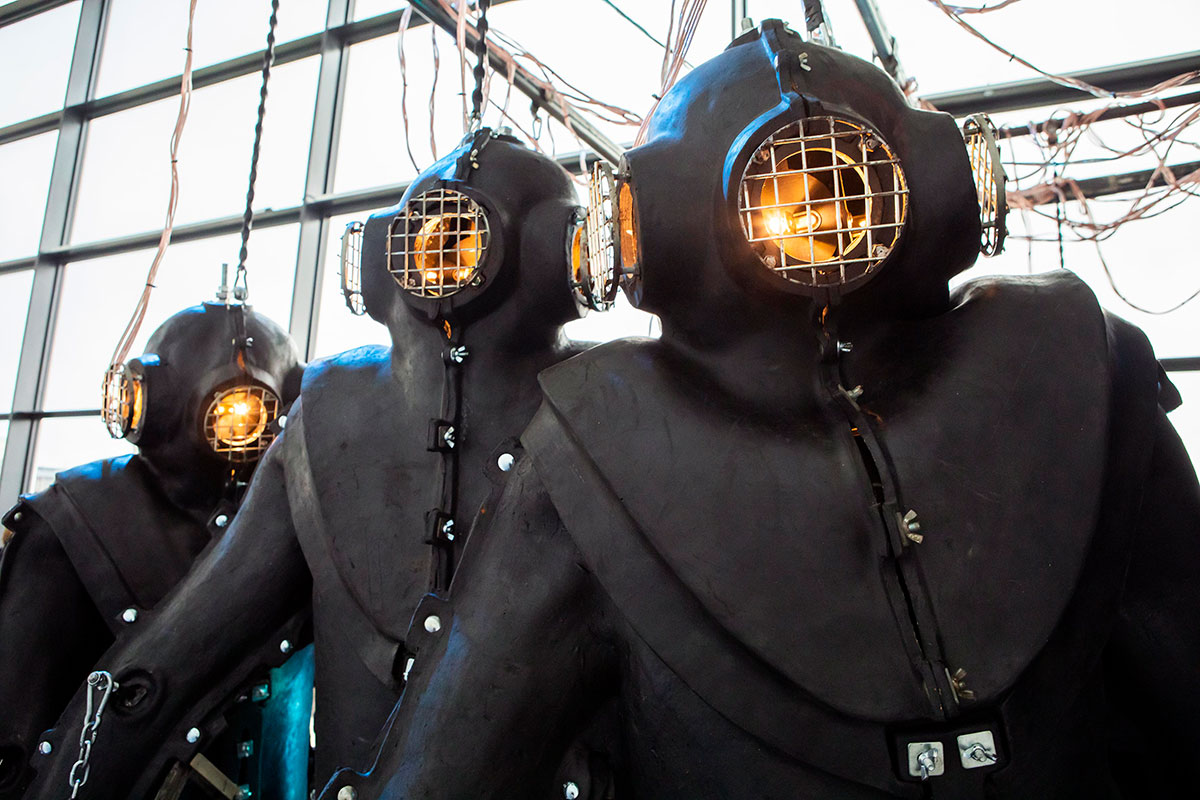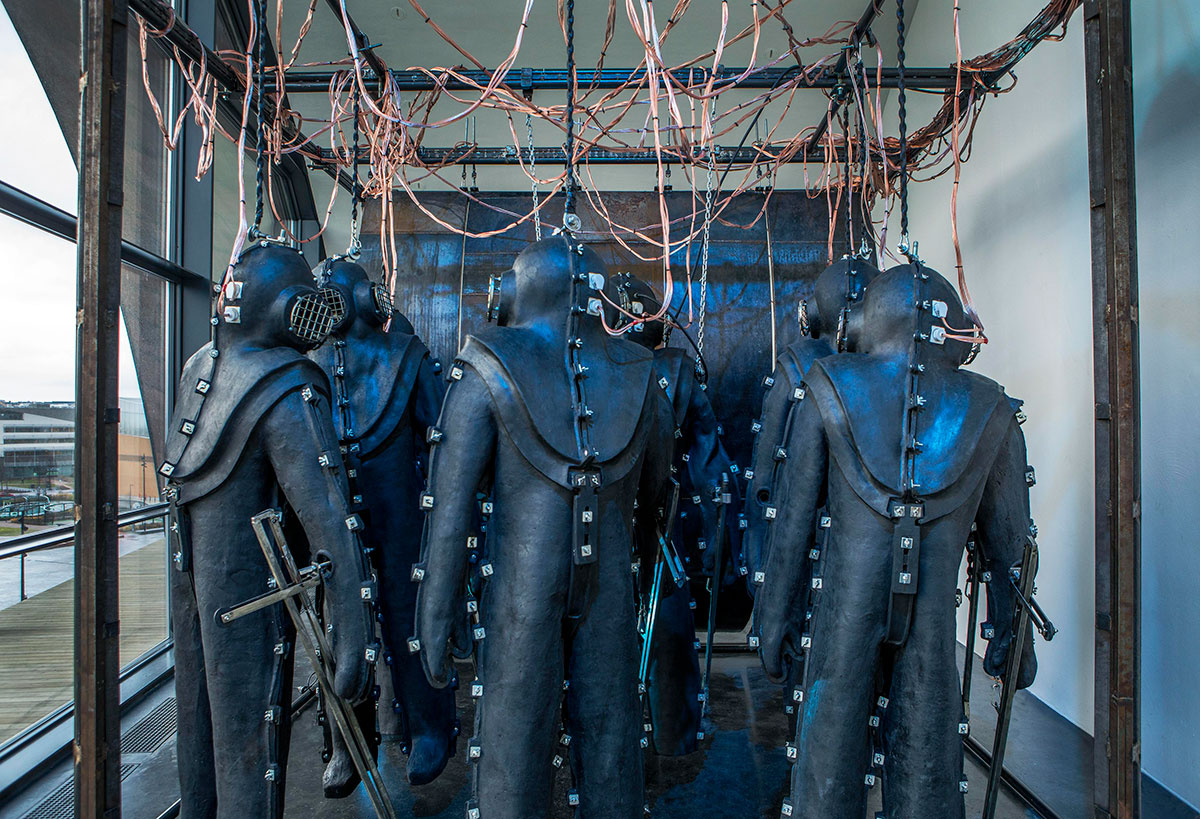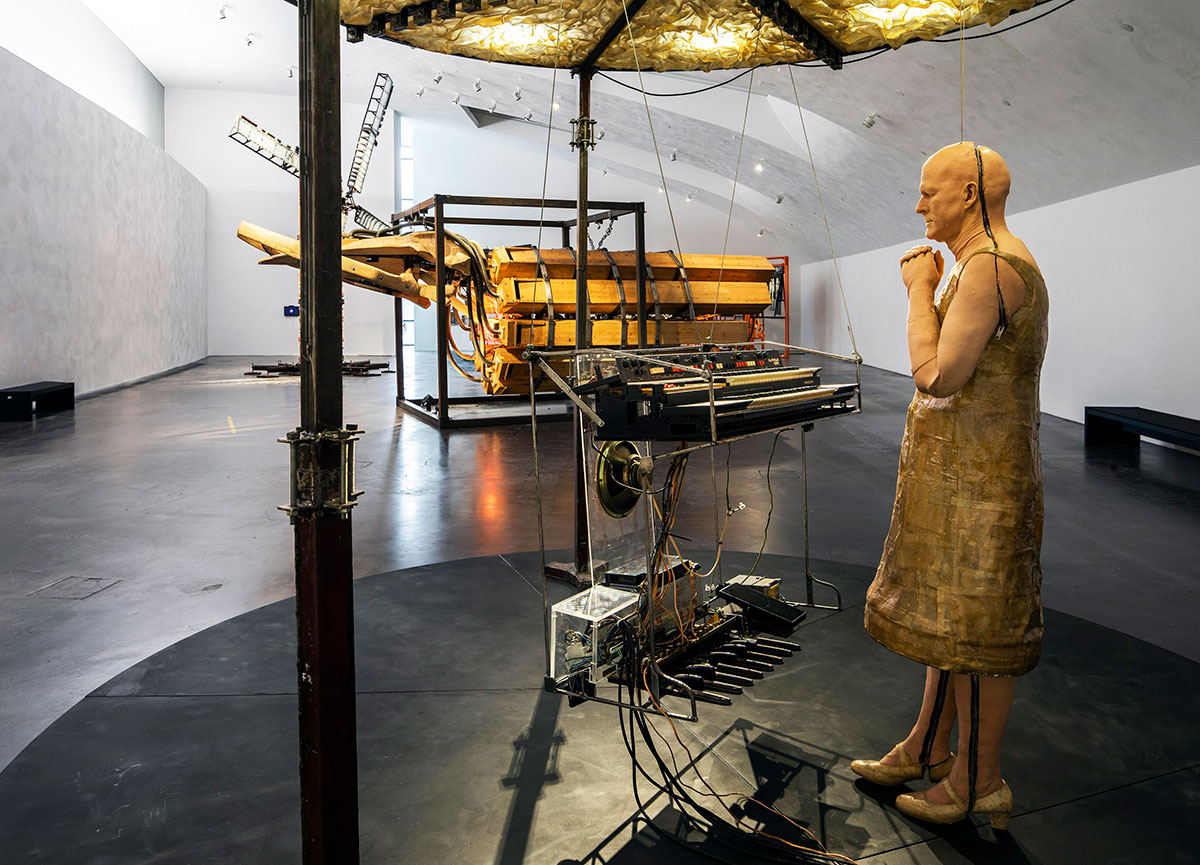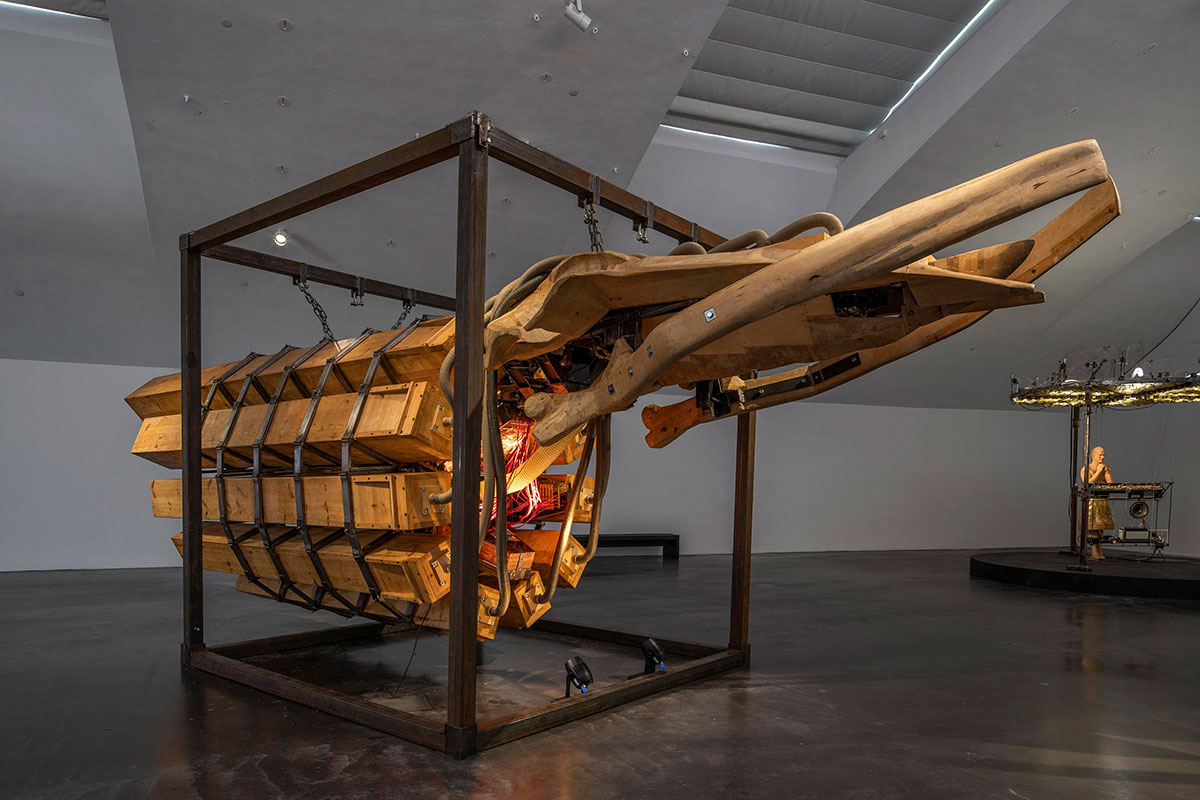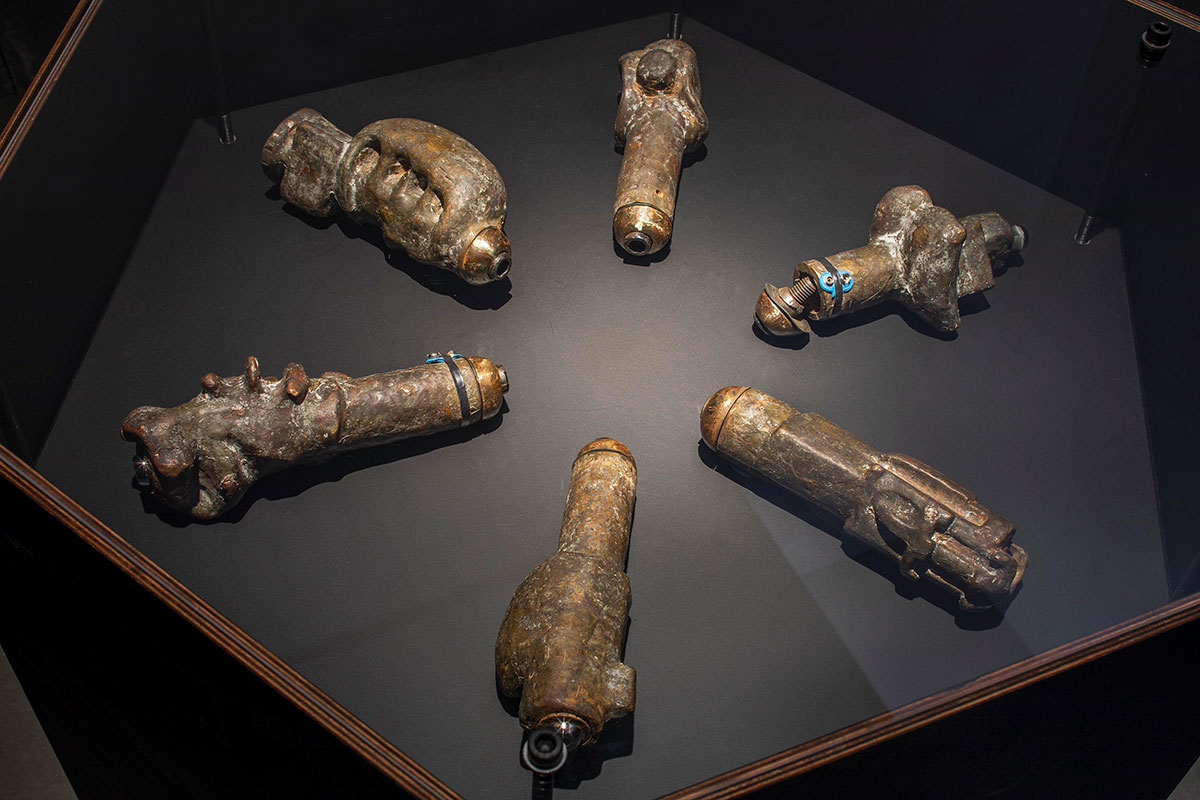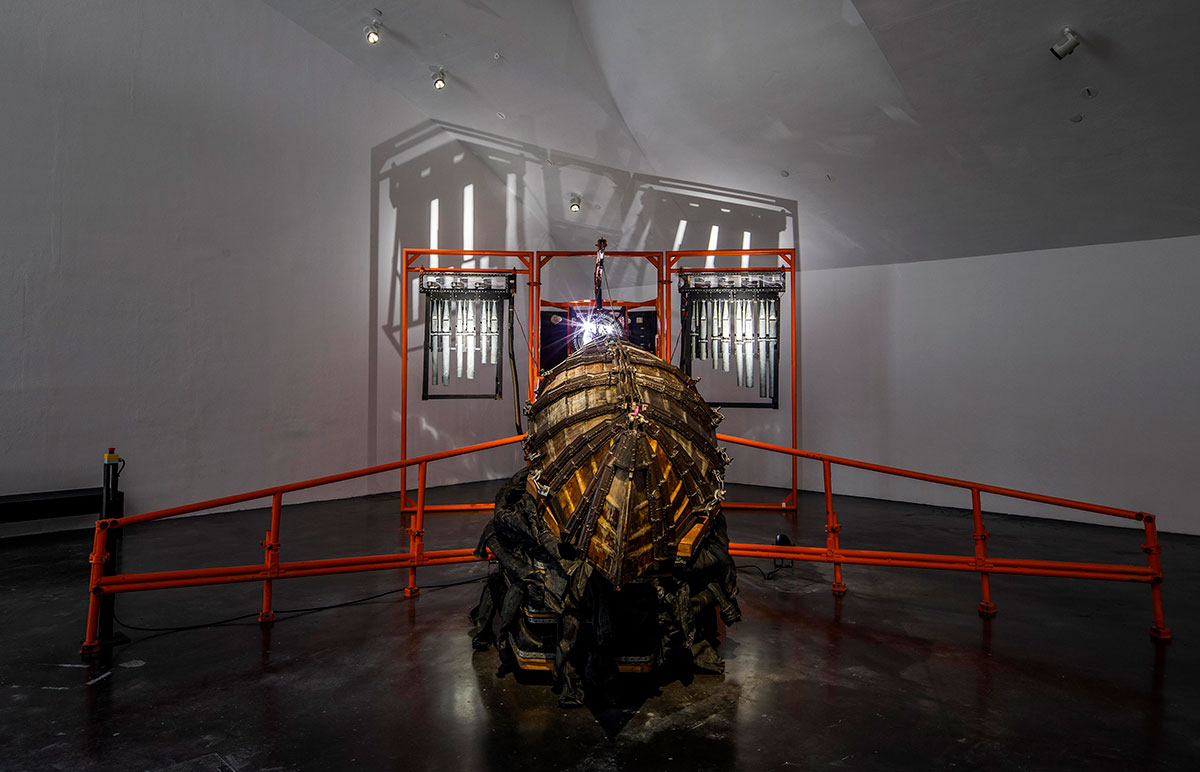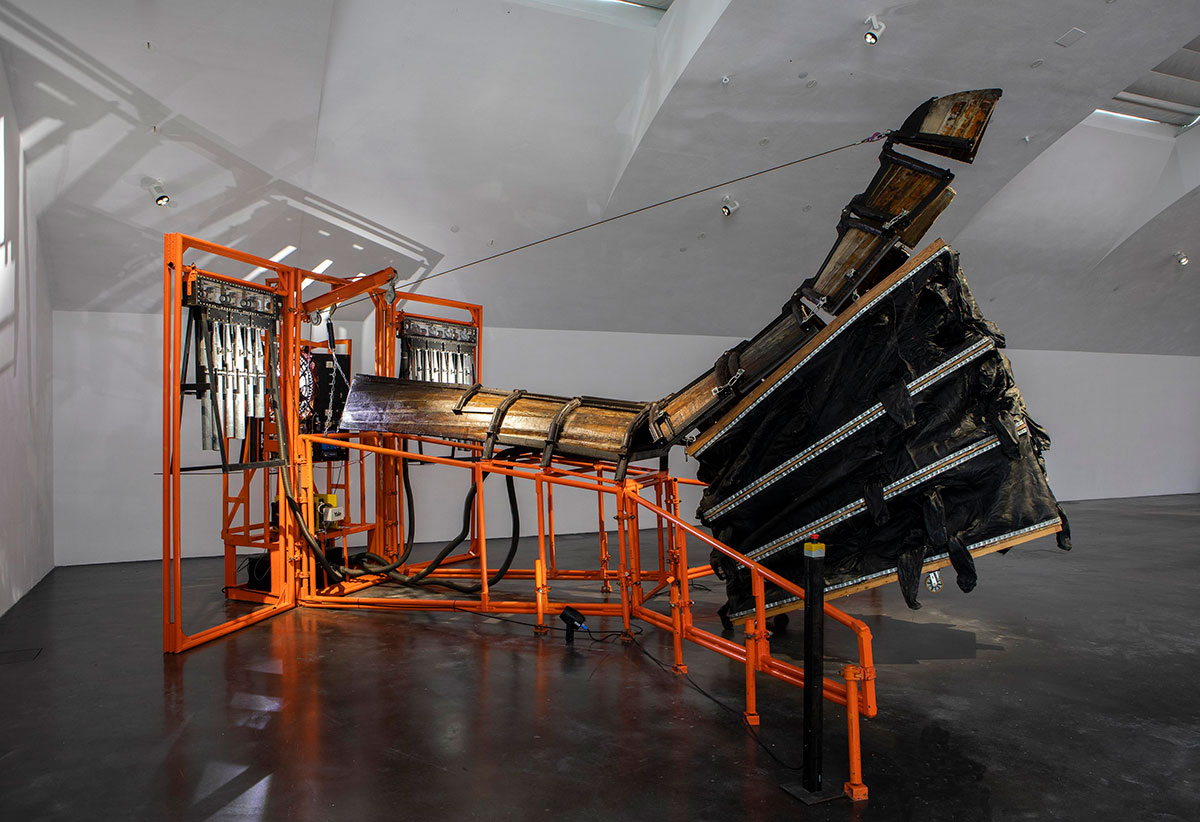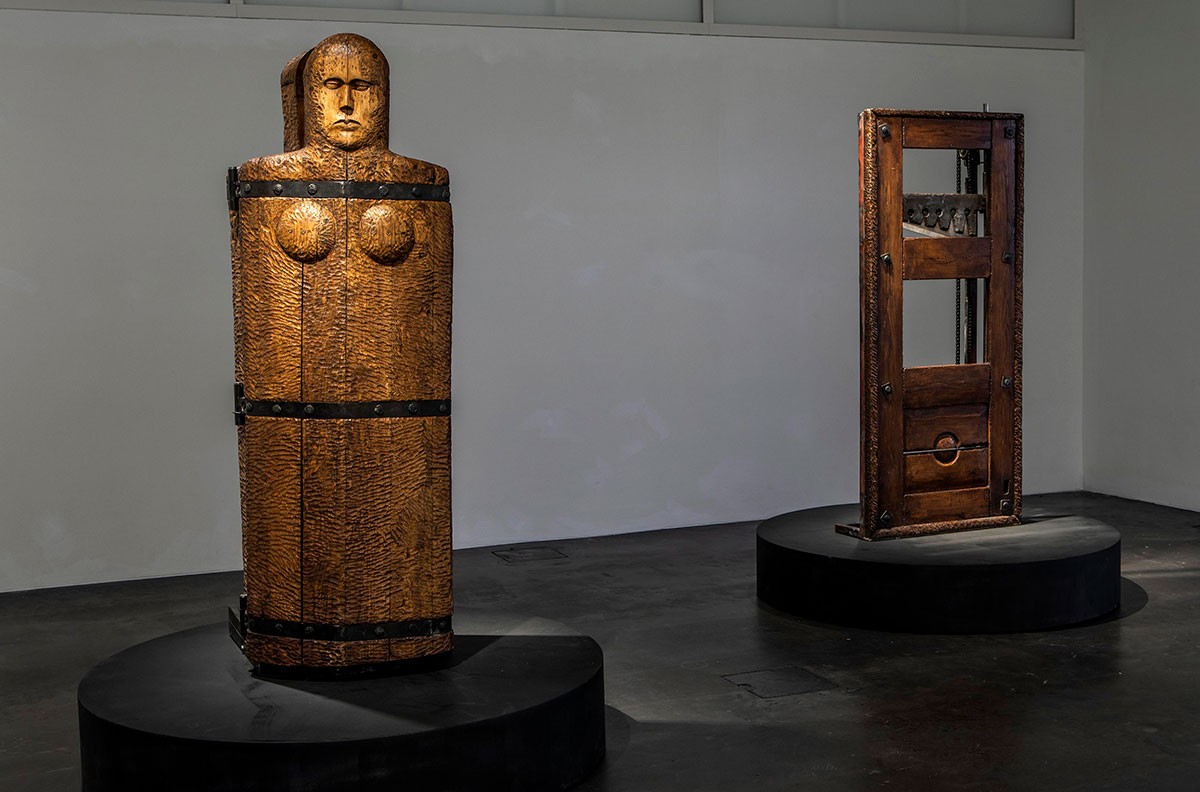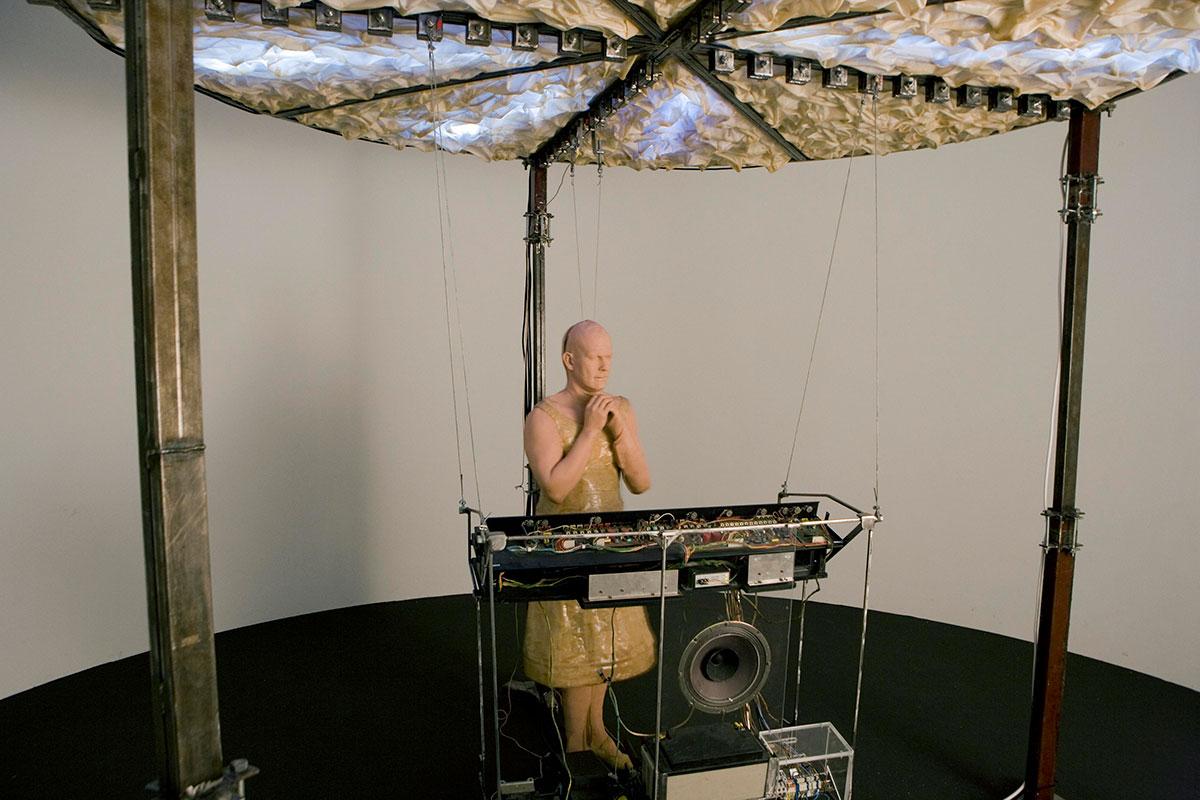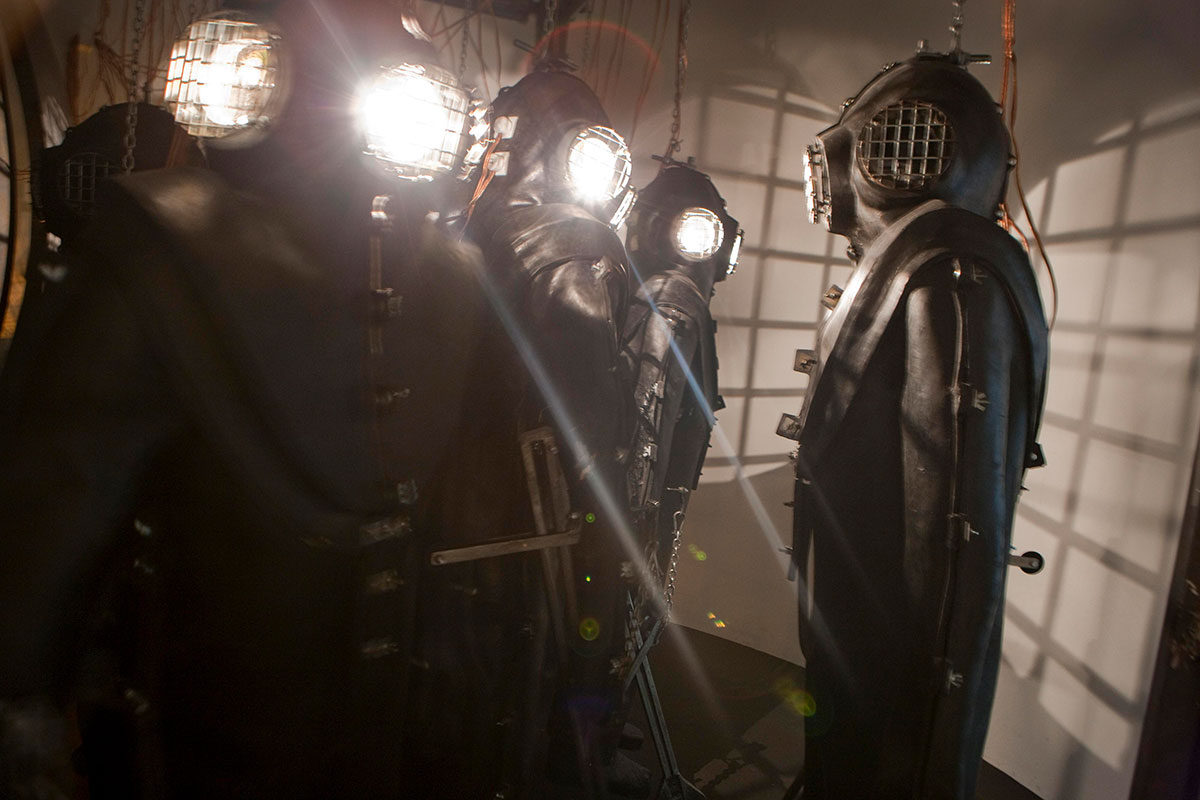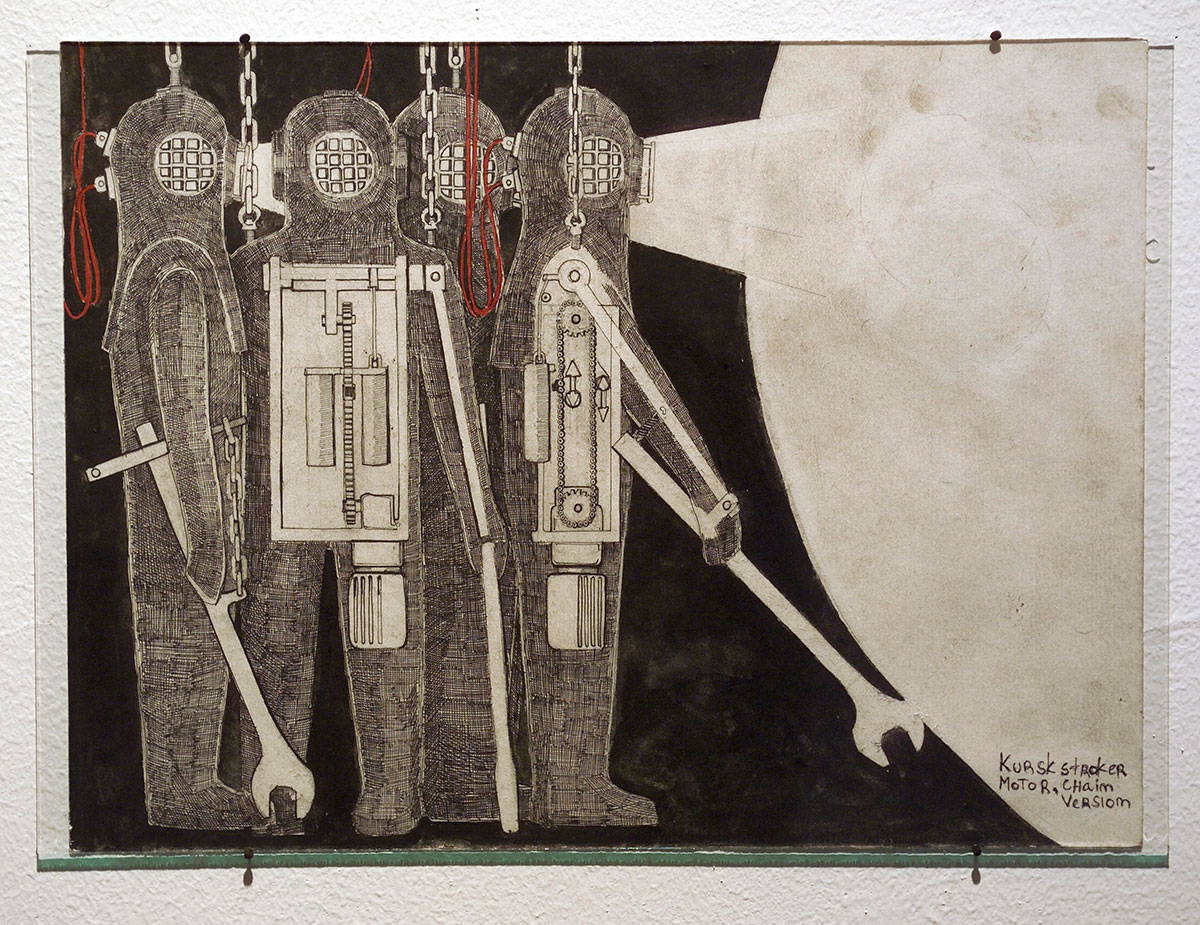PRESENTATION: Markus Copper-The Taste of Metal
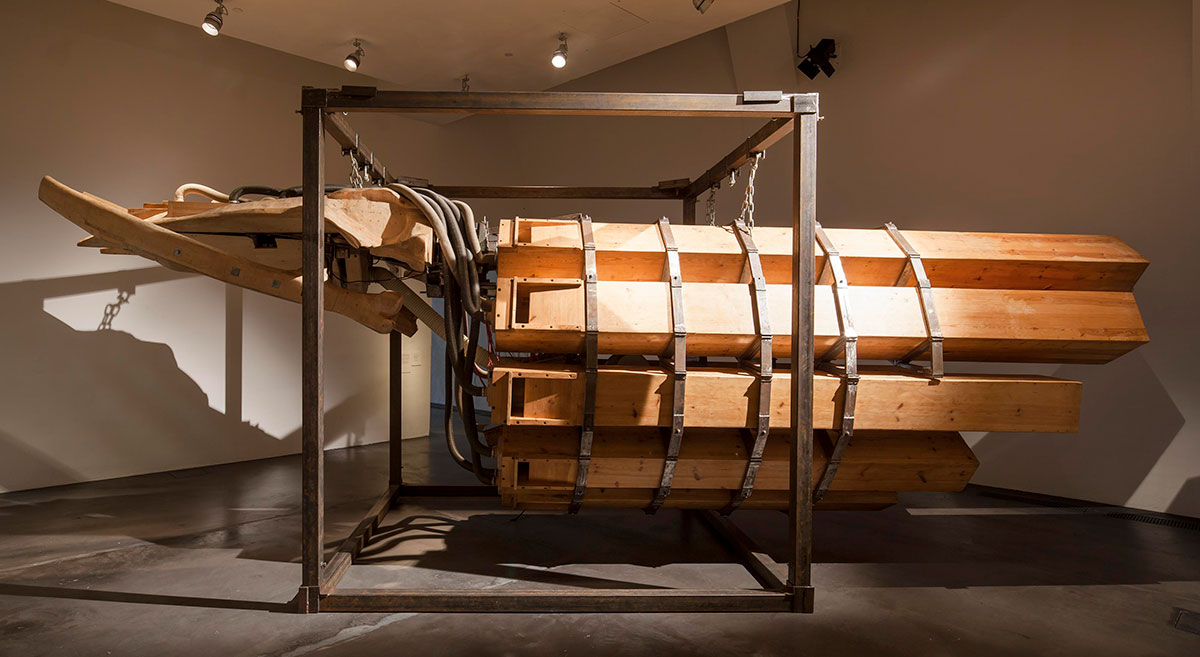 Markus Copper has recently emerged as a key figure in the thriving Finnish Contemporary Art scene, winning the Scandinavian Ars Fennica prize in 1999. The works of Marcus Copper exist as obsolete frameworks still in the throes of functionality. Referencing the building blocks of nature and heavy industrial techniques of the 19th and 20th centuries he creates intricate mechanical assemblages that mix superstition, politics and suppression with visual metaphors for enlightenment, evolution and science.
Markus Copper has recently emerged as a key figure in the thriving Finnish Contemporary Art scene, winning the Scandinavian Ars Fennica prize in 1999. The works of Marcus Copper exist as obsolete frameworks still in the throes of functionality. Referencing the building blocks of nature and heavy industrial techniques of the 19th and 20th centuries he creates intricate mechanical assemblages that mix superstition, politics and suppression with visual metaphors for enlightenment, evolution and science.
By Dimitris Lempesis
Photo: Kiasma Archive
Markus Copper is best known for his large, spatially dominating works that feature sounds, mechanical movement or light. Many of his works are commentary on human behaviour, morality and mindscape. Copper was a socially engaged artist whose work explored disasters through metaphor. The subjects of his work can be found in collective traumas, such as the sinking of the passenger ferry Estonia or that of the nuclear submarine Kursk. The Retrospective “The Taste of Metal” showcases Copper’s exceptional art and his worldview with a selection of work of unprecedented variety and depth. Especially in the early stages of his career, Copper sought to impart a sense of threat to his work, and some of his early pieces even involved a dimension of actual danger. A case in point is “Sixpack of Instant Death” (1995), which consisted of six sculptural objects that Copper gave to his friends. The objects were designed to explode when linked together, in 2020, the police tracked down the work’s missing components, which have since been rendered harmless. Copper was a socially engaged artist whose work explored disasters through metaphor. The large works “Estonia” (2006) and “Kursk” (2004) encapsulate the collective dread generated by the sinking of the passenger ferry Estonia and that of the nuclear submarine Kursk.The nuclear submarine Kursk of the Antey class (949A) armed with nuclear missiles was the world’s largest combat submarine and one of the most sophisticated vessels of the Northern Fleet of the Russian Navy. On 12/8/2000, during a naval exercise in the Barents Sea, two explosions of on-board torpedoes immediately killed most members of the 118 crew, and the heavily damaged vessel sank to the sea bottom at a depth of 108 metres. 23 sailors survived the fatal accident by escaping to the ninth, rearmost compartment of the submarine, where under the most terrifying conditions of complete darkness, ice-cold water polluted by fumes from fuel and oils and the permanently worsening quality of the stale air, they waited for rescue by an evacuation mini-submarine. The whole world watched live and direct through the media the progress of rescue work accompanied by evident disagreements within the Russian military and political hierarchy between those who wanted to expedite accepting foreign aid and the hardliners who rejected it. Before the Russians, which did not have the necessary rescue resources, finally decided to ask for help, it was too late – when on 21st August Russian and Norwegian divers reached the submarine, it was obvious that no one could have survived. Markus Copper’s installation metaphorically and mimetically invokes the hours of the surviving sailors of The Kursk waiting in vain for rescue and the tragedy of their agony. By engaging the viewer’s sensory perception and emotions it underpins deeply existential human themes, which accompany such a critical situation: hope and hopelessness, fear, race against time, waiting for rescue/death, heroism and personal sacrifice. It is also an original comment on the subject of technology failure, the destruction of a perfect machine, which in its throes kills the crew as well. The work, however, can also be rightfully approached as an artistic memorial to the brave sailors of The Kursk, victims of an unfortunate accident, as well as malicious military-political bureaucracy which does not hesitate to sacrifice human life in the name of preserving dubious prestige and keeping a military secret. The steel walls of the former gasometer provide an echoing environment and enhance the impression from the installation and its impact. The exhibition also includes Copper’s best-known work, a whale sculpture entitled “Archangel of Seven Seas” (1998). Part of the Kiasma collection today, the iconic piece is one of the museum’s most cherished artworks. The work is constructed from Church organ pipes, wood and electronics, which combined, form the life-size skeleton of a Whale. Its hand-made aesthetic and obsessive technical complexity creates a formidable presence akin to a historical fantasy. It does not attempt to create an animatronic narrative; it bellows at such tonal depth that the sound waves generated have a transfixing effect. The exposed innards form electronic and pneumatic networks that drive the sub-sonic tones. This complexity and raw spirituality is masked by a simplicity of form. Many of Copper’s works have been dismantled or lost. They are presented in the exhibition in the form of drawings, sketches and documentary material. With the help of the artist’s family and friends, Kiasma has succeeded in recovering and partly conserving several works, including the mechanical installation “Whaling Station” (2006), that is constructed of leather jackets and a rowboat, the installation reacts to motion by performing a movement that evokes the skinning of a whale. Other works are: “South Pacific Execution” (2007) and “The Khyber Pass” (2014), as well as a variation of the sculpture “Circle of Brothers” (2011–2012). These are all now accessioned to the collection of the Finnish National Gallery. Copper was also a prolific and skilful draughtsman. The show includes several of his drawings from various museum collections, including his last suite, “Roadside Picnic” (2019). Also included in the show are rarely screened video documentaries about the artist from the 1990s.
Photo: Markus Copper, Archangel of Seven Seas, 1998, Photo: Finnish National Gallery / Pirje Mykkänen
Info: Curators: Leevi Haapala and Jari-Pekka Vanhala, Museum of Contemporary Art Kiasma, Mannerheiminaukio 2, Helsinki, Finland, Duration: 11/11/2022-26/2/2023, Days & Hours: Tue-Fri 10:00-20:30, Sat 10:00-18:00, Sun 10:00-17:00, https://kiasma.fi/
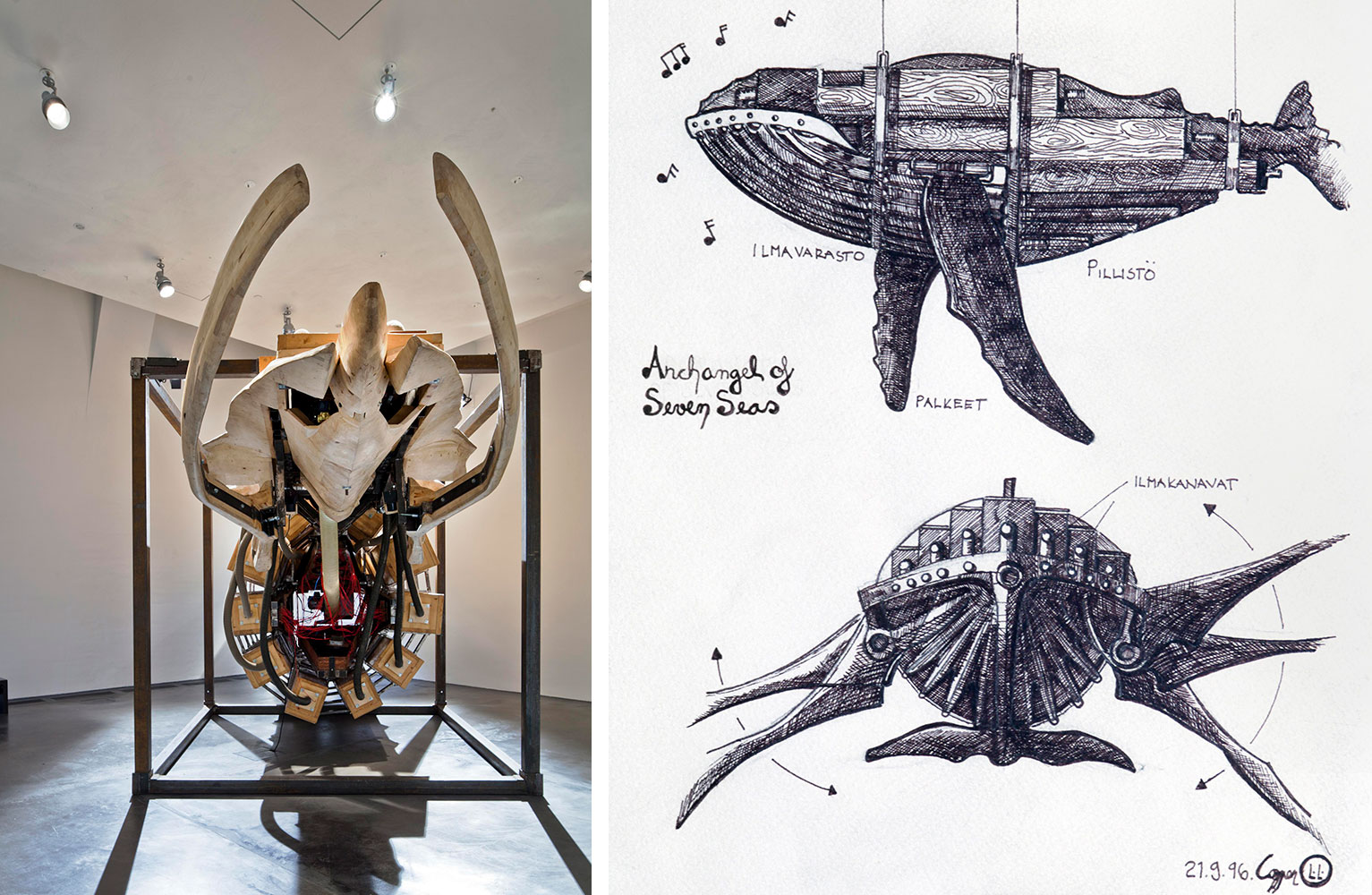
Right: Markus Copper, Archangel of Seven Seas, sketch, 1996, Photo: Finnish National Gallery / Petri Virtanen
